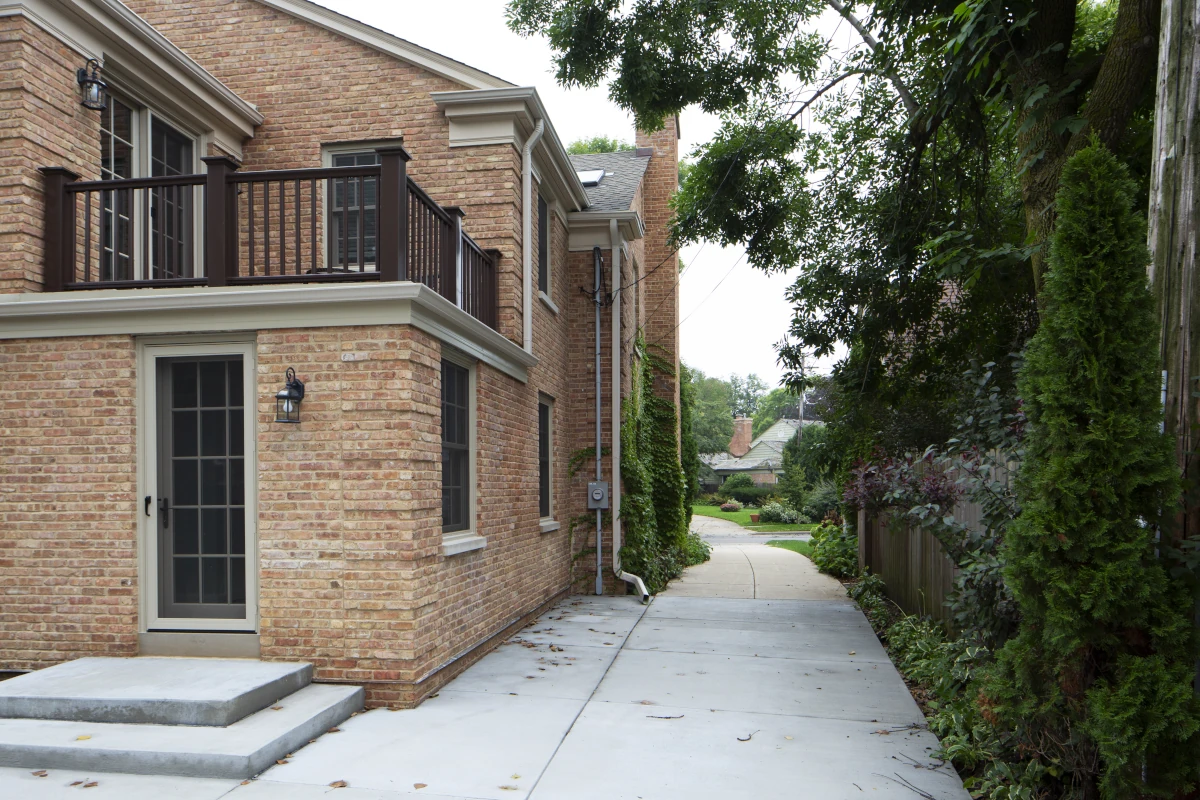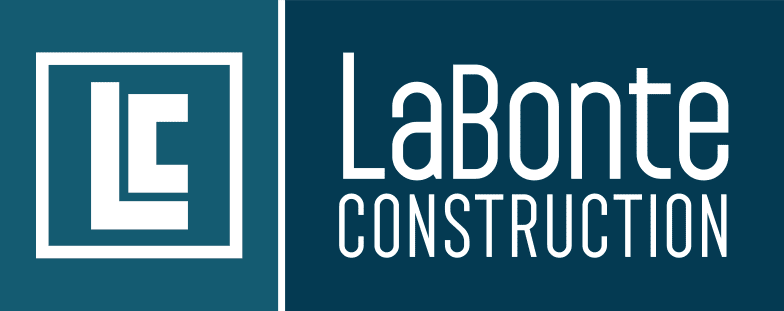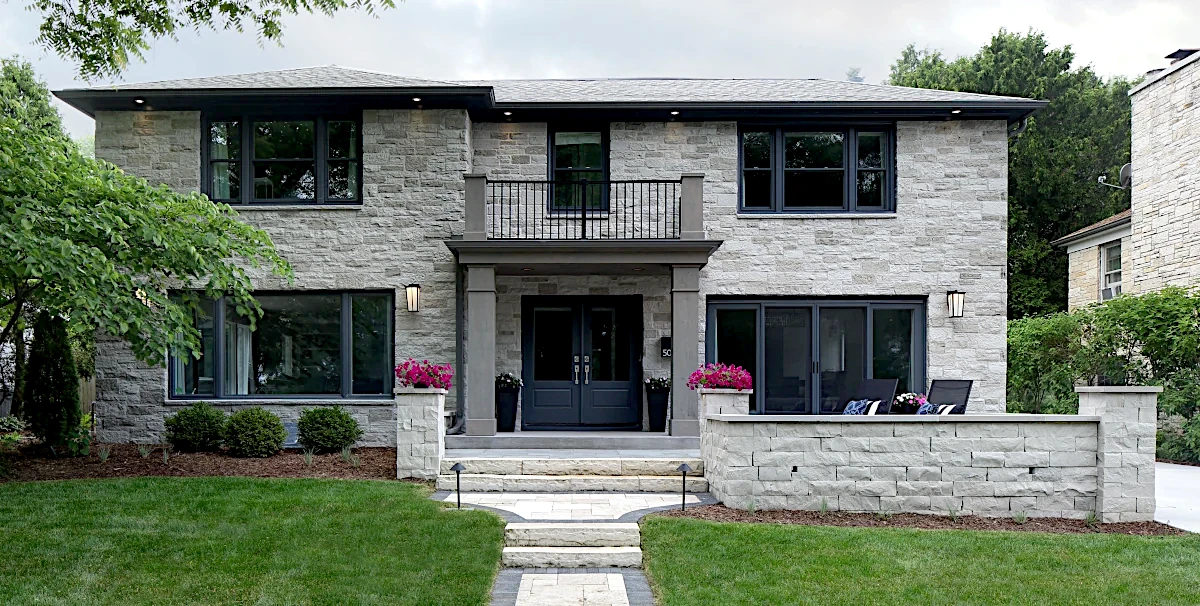If you’re considering a new roof or building an addition, you may first want to learn about the most common roof types in home remodeling, and how they impact your choice of roofing materials.
Depending on a home’s architecture, a roof can potentially make up 40% of the exterior, often playing a big role in its overall look and curb appeal.
So, when the time comes to install a new roof, you’ll want to pick roofing materials and shingle colors that work well with the shape and slope of your roof, as well as complement your home’s exterior design.
Beyond the aesthetic considerations, adding a new roof is also a great opportunity to integrate energy-saving or “green” elements into your house, such as solar panels, a green roof, or a design that collects rainwater or melted snow that you can repurpose for your lawn or garden.
Also, adding a new roof style can increase the amount of living space in your home, which may justify the cost of a more expensive roof.
Moreover, while you may want to make a unique statement with your new roof, remember to make sure it complements your home’s existing design features—and blends in well with the surrounding neighborhood.
Common Roof Types
Gable roof
A gable roof is the most common type of roof in the United States: the classic triangle shape is used across many styles and geographic regions.
The gable roof is very versatile, and its simple design is easy to install and offers a timeless look. The high pitch of a gable roof allows for easy water and snow runoff into gutters and downspouts.
One possible drawback for gable roofs is that they are susceptible to damage by very strong winds.
Hip roof
A traditional hip roof consists of four equal-length slopes that meet to form a simple ridge. There are variations, such as a half-hip that features two shorter sides with eaves.
Although it is slightly more difficult to build than a gable style, the hip roof is a popular choice. All four sides can have gutters and downspouts, improving water and snow runoff.
They also perform better in high-wind areas. However, it may require extra ventilation efforts in the attic.
Also, most of a hip roof is visible when looking at your house, so the type and color of roofing shingles you choose for a hip roof will greatly influence your home’s overall exterior appearance.
Dutch roof
Dutch roof is basically a hip roof with a small gable at either end. The result is easier access to the lower portion of the roof with the added benefits of natural light, extra space, and added interest to your home’s architecture.
They can work great for attic spaces on your home or garage.
Mansard roof
It is a French design and is more difficult to build than the hip or gable roof. The mansard roof actually features two slopes within one on each side.
The bottom part of the roof slope is steeper so that the pitch of the roof barely starts. This allows more room on the inside and in most cases creates an extra space.
It offers a beautiful, elegant aesthetic, but the mansard may require structural changes to your existing house to accommodate.
Perhaps the biggest downside for the mansard roof in the Midwest is drainage.
Flat roof
Flat roofs are not really 100% flat. They must have a slight slope of at least 2% to allow for water and snow run-off.
Used most often in commercial structures like apartment buildings, malls, and office buildings, flat roofs became widely used on residential homes in the 1950s and ‘60s.
The simple design and construction of a flat roof tends to reduce building costs, but especially in Wisconsin, it is essential to hire a quality contractor. A qualified builder will ensure that your flat roof is properly sealed.
A quality flat roof offers many benefits:
- Distinctive design that separates your property from your neighbors’.
- Use as a deck or patio in the spring and summer.
- Potential for adding levels to your home.
- Adding heating and cooling units that won’t obscure the architecture of your home.
- Ease of installing PV solar panels, which will improve energy efficiency and make the roof more eco-friendly.
Shed roof
A shed roof is kind of like a flat roof, but it’s at a much steeper incline.
With just a single slope, you will commonly find shed roofs utilized on cabins, barns, and of course, sheds. But It has gained favor on many ultra-modern builds.
Shed roofs allow for interesting window placements, from small rows of glass panes directly beneath the roof to large picture windows across the front of the house.
A shed roof offers many of the same benefits as a flat roof—including lower cost—without the risk of leaking.
But the single slope does require a strong gutter and downspouts system to handle double the water of a more traditional build.
Butterfly roof
In this very modern design, the two roof slopes meet in a trough in the middle rather than a peak.
The crease where the two sides meet creates a natural channel for directing rainwater into a reservoir—which is usually part of the butterfly design.
This eco-friendly feature can be a challenge for Wisconsin winters, but there are materials available—EPDM rubber, TPO, PVC, or some metal and other organic materials—that can work to keep a butterfly roof watertight.
A butterfly roof can greatly reduce water usage for lawn irrigation or gardening.
Also, the high walls on the edge of the roof provide a great opportunity to increase natural light in the home. Finally, a butterfly roof is very aerodynamic and can withstand strong winds.
Gambrel roof
Also called barn roof because of its most common use, a gambrel roof’s main benefit is providing additional headroom in a house’s top level, due to the low slope of the top two of the roof’s four panels.
The design also allows for installation of windows.
Looking a bit like the top half of an octagon shape, the gambrel roof works perfectly for barns with upper-level lofts to hold stacked hay.
Gambrel roofs are relatively easy to install, and can work with just about any roofing material.
On the downside, the high sloping bottom panels can create poor ventilation, are difficult to install on existing structures, and are susceptible to damage from strong winds.
Dormer roof
A dormer is more an addition to an existent roof. It is a window and a roof (gabled, hipped, flat, among others) protruding from the slope of an existing roof.
A functional dormer creates usable space out of the roof, adding natural light and headroom.
A dormer can also increase ventilation in your upper floor living area, and add unique design elements—both interior and exterior.
As with many other roof additions, a properly installed dormer requires a skilled contractor who will ensure the work is done right and not susceptible to leaks.
M-shaped roof
An M-shaped roof could basically be considered a ‘double gable’. It features two sloped sides that meet in the middle with corresponding slopes on each side. This pattern could be repeated multiple times, especially in condominiums or a strip mall.
The obvious downfall of this design would be snow and rain building up in the center where the two slopes meet but this is alleviated by a central gutter running from front to back, perpendicular to the front of the building. Even so, the pitch of M-framed roofs is generally steeper to assist in runoff and to ‘catch’ less rain and snow.

The Right Roofing Material for Your Home
Replacing or enhancing your home’s roof is one of the most important investments you can make. Choosing the best remodeling contractor is essential, but it is also important to understand the different roofing styles and material options so you can have an informed discussion.
If you are ready to discuss a new roof for your home, please feel free to contact us at LaBonte Construction.

